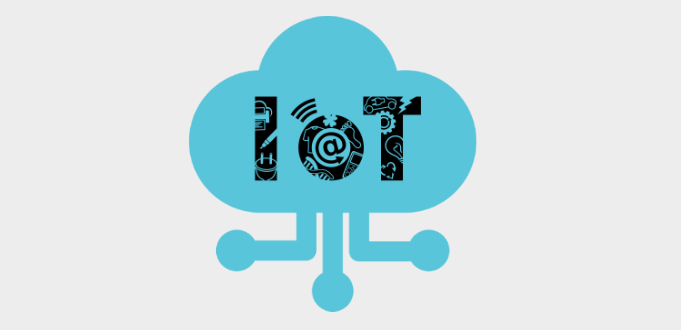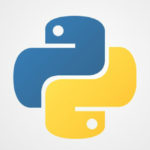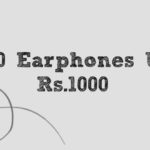What is IoT?
IoT stands for Internet of things. Simply put, this is the concept of basically connecting any device with an on and off switch to the Internet (and/or to each other). This includes everything from cellphones, coffee makers, washing machines, headphones, lamps, wearable devices and almost anything else you can think of. This also applies to components of machines, for example a jet engine of an airplane or the drill of an oil rig. As I mentioned, if it has an on and off switch then chances are it can be a part of the IoT. The analyst firm Gartner says that by 2020 there will be over 26 billion connected devices… That’s a lot of connections (some even estimate this number to be much higher, over 100 billion). The IoT is a giant network of connected “things” (which also includes people). The relationship will be between people-people, people-things, and things-things.
Source : Forbes
In layman’s term: Connecting things ranging from as small as a pacemaker to as big as automated factory machines to the internet which can be operated to do different tasks from anywhere around the globe using internet, that is known as IoT. Let me give you some example to make things very clear:
- You are in your office and you have to reach for a date, but you are already late because of your boss. You can’t go for a date without taking a shower and getting the into the proper outfits, but geyser will take 15-20 min. to boil the water, which will waste your time, which you don’t have, but if the geyser is connected through internet, to a cloud platform eg: IBM Bluemix, you can switch on/off your geyser just with a click on your mobile, so you will switch on the geyser, and by the time your reach home, you can immediately have shower and save your date.
- You love to have coffee immediately after you wake up, you can connect your coffee maker with interent, which will start making coffee for your the moment you will switch off your alarm, so you will have your coffee ready, by the time you are off your bed.
- It’s prime duty for everyone to save electricity, you can do the same using iot, if you forgot to switch off all the lights or appliances running on electricity while leaving for office or a trip, you can switch off the same if you have all your devices connected to internet from any part of the world.
These are very small application of iot, there are very big opportunities in this field, some of which are being explored and some are yet to be explored.
What are the terms used in IoT?
Below, I’ve provided a glossary defining the Internet of Things:
- Internet of Things: A network of internet-connected objects able to collect and exchange data using embedded sensors.
- Internet of Things device: Any stand-alone internet-connected device that can be monitored and/or controlled from a remote location.
- Internet of Things ecosystem: All the components that enable businesses, governments, and consumers to connect to their IoT devices, including remotes, dashboards, networks, gateways, analytics, data storage, and security.
- Entity: Includes businesses, governments, and consumers.
- Physical layer: The hardware that makes an IoT device, including sensors and networking gear.
- Network layer: Responsible for transmitting the data collected by the physical layer to different devices.
- Application layer: This includes the protocols and interfaces that devices use to identify and communicate with each other.
- Remotes: Enable entities that utilize IoT devices to connect with and control them using a dashboard, such as a mobile application. They include smartphones, tablets, PCs, smartwatches, connected TVs, and nontraditional remotes.
- Dashboard: Displays information about the IoT ecosystem to users and enables them to control their IoT ecosystem. It is generally housed on a remote.
- Analytics: Software systems that analyze the data generated by IoT devices. The analysis can be used for a variety of scenarios, such as predictive maintenance.
- Data storage: Where data from IoT devices is stored.
- Networks: The internet communication layer that enables the entity to communicate with their device, and sometimes enables devices to communicate with each other.
What are some of the best IoT platforms?
One IoT device connects to another to transmit information using Internet transfer protocols. IoT platforms serve as the bridge between the devices’ sensors and the data networks.
The following are some of the top IoT platforms on the market today:
- Amazon Web Services
- Microsoft Azure
- ThingWorx IoT Platform
- IBM’s Watson
- Cisco IoT Cloud Connect
- Salesforce IoT Cloud
- Oracle Integrated Cloud
- GE Predix
What are the applications of IoT?
Applications of the Internet of Things
- Smart Home: The smart home is likely the most popular IoT application at the moment because it is the one that is most affordable and readily available to consumers. From the Amazon Echo to the Nest Thermostat, there are hundreds of products on the market that users can control with their voices to make their lives more connected than ever.
- Wearables: Watches are no longer just for telling time. The Apple Watch and other smartwatches on the market have turned our wrists into smartphone holsters by enabling text messaging, phone calls, and more. And devices such as Fitbit and Jawbone have helped revolutionize the fitness world by giving people more data about their workouts.
- Smart Cities: The IoT has the potential to transform entire cities by solving real problems citizens face each day. With the proper connections and data, the Internet of Things can solve traffic congestion issues and reduce noise, crime, and pollution.
- Connected Car: These vehicles are equipped with Internet access and can share that access with others, just like connecting to a wireless network in a home or office. More vehicles are starting to come equipped with this functionality, so prepare to see more apps included in future cars.
Internet of Things Devices & Examples
- Amazon Echo – Smart Home: The Amazon Echo works through its voice assistant, Alexa, which users can talk to in order to perform a variety of functions. Users can tell Alexa to play music, provide a weather report, get sports scores, order an Uber, and more.
- Fitbit One – Wearables: The Fitbit One tracks your steps, floors climbed, calories burned, and sleep quality. The device also wirelessly syncs with computers and smartphones in order to transmit your fitness data in understandable charts to monitor your progress.
- Barcelona – Smart Cities: The Spanish city is one of the foremost smart cities in the world after it implemented several IoT initiatives that have helped enhance smart parking and the environment.
- AT&T – Connected Car: AT&T added 1.3 million cars to its network in the second quarter of 2016, bringing the total number of cars it connects to 9.5 million. Drivers don’t have to subscribe or pay a monthly fee for data in order for AT&T to count them as subscribers.
Source : Business Insider
What is the future of IoT?
BI did a research on IoT, and they collected lot of data and after doing lots of analysis on those data they came with these facts:
- In total, BI forecasts there will be 34 billion devices connected to the internet by 2020, up from 10 billion in 2015. IoT devices will account for 24 billion, while traditional computing devices (e.g. smartphones, tablets, smartwatches, etc.) will comprise 10 billion.
- Nearly $6 trillion will be spent on IoT solutions over the next five years.
- Businesses will be the top adopter of IoT solutions. They see three ways the IoT can improve their bottom line by 1) lowering operating costs; 2) increasing productivity; and 3) expanding to new markets or developing new product offerings.
- Governments are focused on increasing productivity, decreasing costs, and improving their citizens’ quality of life. We forecast they will be the second-largest adopters of IoT ecosystems.
- Consumers will lag behind businesses and governments in IoT adoption. Still, they will purchase a massive number of devices and invest a significant amount of money in IoT ecosystems.
Source : Business Insider
Here is an Image which I found on internet about IoT which will make everything clear about IoT:
Source : postscape
What are the best online courses and resources to learn IoT?
IoT is vast, but as we know if you want to make a motorcycle, you need the know the concept behind working of a bicycle, that is both the wheels need to move synchronously, which is done using a chain, same is what we do for a motorcycle, you can increase the power in the bike make a sports bike or a cruiser the fundamental thing will remain same only the complexities will increase as you make changes.
Same is the case with IoT, I learned about IoT with the course on Coursera by IBM, A Developer’s guide to internet of things. This course taught me the fundamental behind working of IoT, now let IoT project be of any level of complexity, I will know what are the fundamentals behind them.
Here are some of the best online courses available to learn IoT:
All the courses mentioned here are awesome, but the one with
are (awesome)².
- Complete Guide to Build IOT Things from Scratch to Market (Udemy)

- A developer’s guide to the Internet of Things (IoT) (Coursera)

- Create Your Own Internet of Things (IoT) Device (Coursera)

- IoT – Turn a light on with your iPhone (Udemy)

- Build Your Own Internet of Things (Coursera [Qualcomm])

- A developer’s guide to Exploring and Visualizing IoT Data (Coursera)
- Introduction to Internet of Things(IoT) using Arduino (Udemy)
- Unpacking the Internet of Things (IoT) (Udemy [Free])
- IoT enabled Aeroponics using Raspberry Pi 3 (Udemy)

- Create Your Own IOT Device (Udemy)
Here are some the best books available online to learn IoT:
**Clicking on the book will take you directly to your local Amazon store.
My recommendation for other good resources to learn and keep yourself updated with IoT are:
- IoT Central (Best)

- Articles about IoT on Business Insider
- IBM Developer’s Recipe’s

- IBM Developer IoT Guide
























